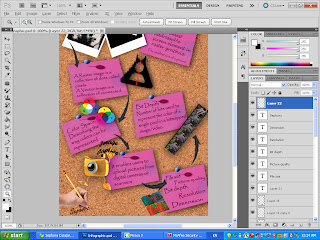Pixels:
In digital imaging, a pixel (or picture element) is the smallest addressable screen element in raster graphics; it is the smallest unit of picture that can be controlled. In color image systems, a color is typically represented by three or four component intensities such as red, green, and blue, or cyan, magenta, yellow, and black.
Raster and Vector Images:
A raster image is a collection of dots called pixels. Each pixel is a tiny colored square. When an image is scanned, the image is converted to a collection of pixels called a raster image.
A vector image is a collection of connected lines and curves that produce objects. When creating a vector image in a vector illustration program, node or drawing points are inserted and lines and curves connect notes together. Vector images are object-oriented while raster images are pixel oriented.
Bit Depth:
In computer graphics, color depth or bit depth is the number of bits used to represent the color of a single pixel in a bitmapped image or video frame buffer. This concept is also known as bits per pixel (bpp), particularly when specified along with the number of bits used. Higher color depth gives a broader range of distinct colors.
Color Space:
A color model is an abstract mathematical model describing the way colors can be represented as tuples of numbers, typically as three or four values or color components (e.g. RGB and CMYK are color models).
Image Capture:
Is an application program that enables users to upload pictures from digital cameras or scanners which are either connected directly to the computer or the network.
Optimising:
When you optimise images for the web is a tricky business. You have to get the right balance between filesize and picture quality. There are three key areas where bytes can be shaved off your graphics: bit depth (number of colours), resolution, and dimension.
The process....





Thankyou loads - much appreciated! :)
ReplyDelete